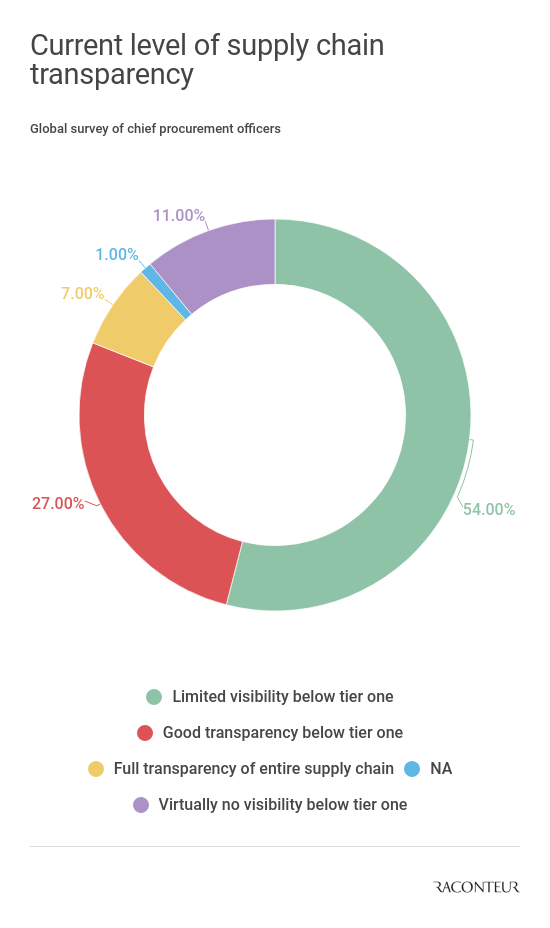Procurement is all about value, so too is sustainability as long as that value is measured in more than just money.
In principle, the synergy is clear, says Duncan Brock, group director at the Chartered Institute of Procurement & Supply. “Sustainability runs through the heart of procurement,” he says. “It is not only in the best interests of customers and the environment, but typically makes processes more efficient and less costly.”
Sustainability is not only in the best interests of customers and the environment, but typically makes processes more efficient and less costly
In practice is where the challenge starts. Procurement is critical to embedding sustainability into decision-making and the supply chain is the engine room, explains director of sustainability for Canon Europe, Stuart Poore. “Any business serious about changing its value chain needs to get practical in the way they manage suppliers,” he says. “Clear and precise expectations must be laid out in tendering and contracting, including targets for improvement. Without that, there’s a danger nothing substantive will be delivered.”
How to track sustainability in the supply chain
How best to target and track supply chain sustainability is open to debate, says Mr Brock. “There is a range of ways businesses are integrating sustainability into procurement. Heathrow Airport, for example, has embedded sustainability in supplier contracts for construction of the third runway, including key performance indicators and evaluation criteria,” he says.
Most sizeable organisations rely to some degree on supply chains to deliver set goals, but the construction industry is almost archetypal in its traditional contracting model.
Unfortunately, fallout from the disastrous failure of Carillion illustrates just how many supply chain businesses can take a hit in the wake of a major collapse. Its implosion looks set to break national insolvency records, with liabilities of almost £7 billion, leaving creditors among its 30,000 suppliers facing a payout of less than one penny in every pound.
Even in this industry, though, the procurement game is changing, and for the better, says Shaun McCarthy, director of Action Sustainability and chair of the Supply Chain Sustainability School. “In construction, around 80 per cent of main contractor revenue goes to the supply chain,” he says. “However, it is no longer just about ticking boxes; the new standard for sustainable procurement, ISO 20400, provides guidance on aligning sustainability goals.”
The writing is on the wall for bare-minimum compliance, according to Mr McCarthy, who led the UK delegation on the new standard. Furthermore, it seems entirely appropriate the world first for completing assessment against ISO 20400 should have been claimed by a leading UK-based international infrastructure and construction company, Balfour Beatty.
Construction needs to be proactive in procurement
A more holistic view of sustainability is emerging in construction, says Dr Shamir Ghumra, BREEAM sustainability certification scheme director at the Building Research Establishment (BRE). “Procurement professionals are increasingly looking at total value. For instance, there is now much more emphasis on the social-value contribution and also how risks such as modern slavery can be minimised,” he says.
Indeed, in a bid to shoulder responsibility and show leadership, the construction sector has launched an index of the Top 100 Corporate Modern Slavery Influencers, created by BRE, with Sustain Worldwide.
As an industry famous for long project lead-times and duration, construction also needs to get proactive and preventative with procurement, rather than merely reactive, adds Dr Ghumra. He says: “Sustainability considerations early in the project have greater impact on the finished asset. More sustainable and ethical products can be specified and the procurement team plays a critical role in ensuring no substitutions at a later stage.”
Such prime-mover impetus can generate increasing momentum further down the supply chain, known as a bullwhip effect.
While acknowledging procurement often plays the role of gatekeeper for an organisation, smart procurement expert at Ivalua, Alex Saric, is also keen to emphasise the creative potential of a more collaborative, less prescriptive approach. “By creating a dialogue with suppliers, procurement can tap into a rich source of innovation that can help drive green initiatives,” he says. “This collaboration will open up the entire production process to change, allowing for greater efficiency and waste reduction.”
How sustainability creates value
Estimates suggest construction accounts for 33 per cent of all waste in the UK, plus it consumes 60 per cent of all materials. Not surprisingly, circular economy is now a hot topic.
At a strategic level, there is growing support for adoption of offsite construction methods, where manufacture of key elements and even whole buildings in factory conditions can help boost resource efficiency.
There are also myriad small wins in supply chain procurement contributing to a cumulative circularity effect. For example, as the largest UK housebuilder by volume, Barratt purchases millions of roof tiles a year. Switching to an interlocking system from Forticrete meant using up to four times less material. Building at scale, such specifics really start to add up.
If you think sustainable procurement costs more, you are doing it wrong
Weaving together all these strands of supply chain sustainability is where procurement optimises outcomes, says Dale Turner, director of procurement and supply chain at Skanska UK. He says: “Procurement is fundamental in deploying a balanced scorecard approach, ensuring we win and deliver profitable projects through an integrated safe, green, ethical, diverse, innovative and best-value supply chain.”
Ultimately, best value need not involve some grubby trade-off between eco or ethical ambitions and economic realities. Procurement and sustainability represent a win-win.
In fact, any problem reconciling the two probably means the problem is you, concludes Mr McCarthy: “If you think sustainable procurement costs more, you are doing it wrong.”
How to track sustainability in the supply chain

